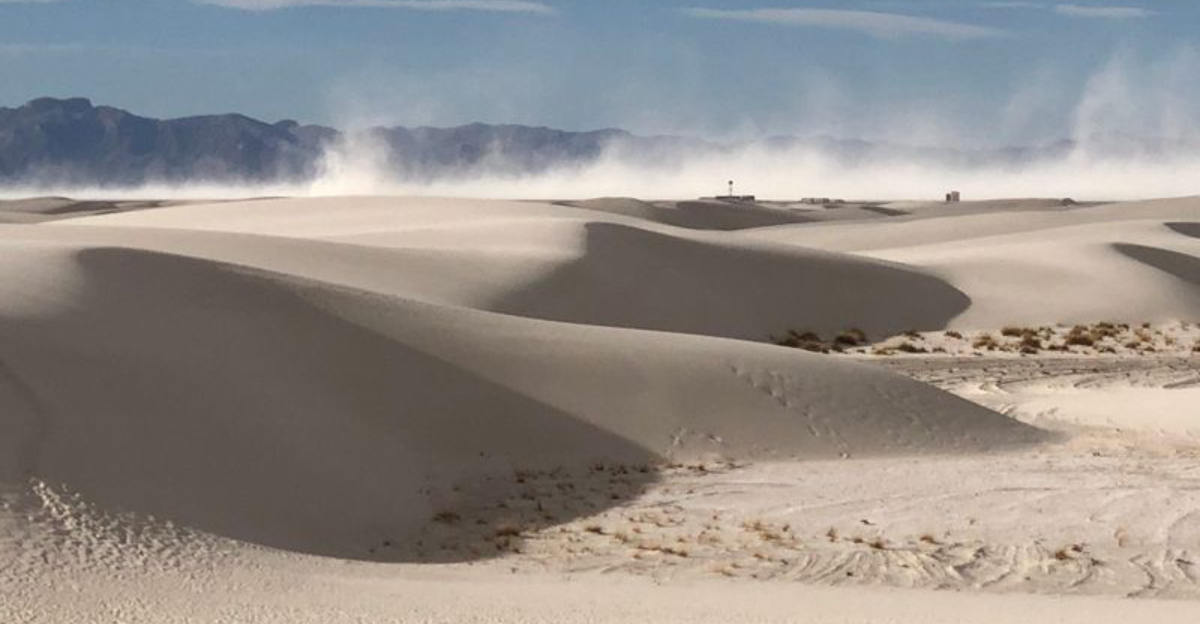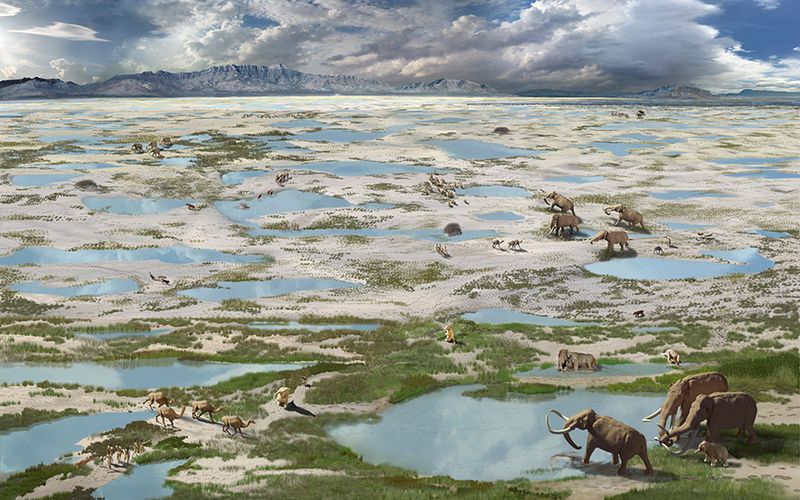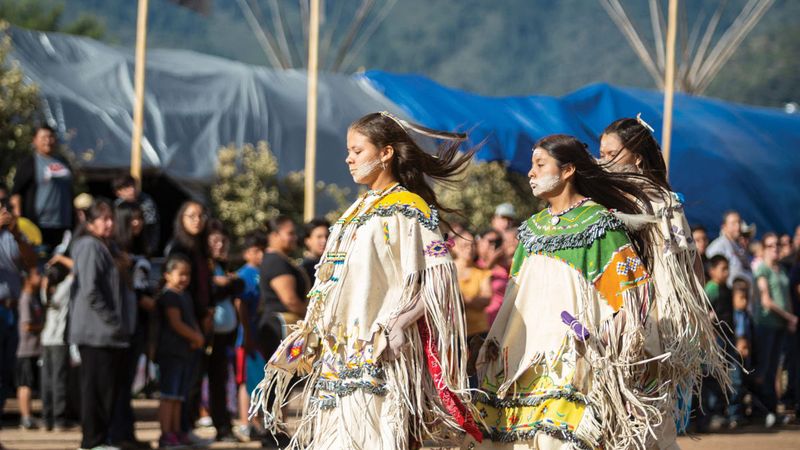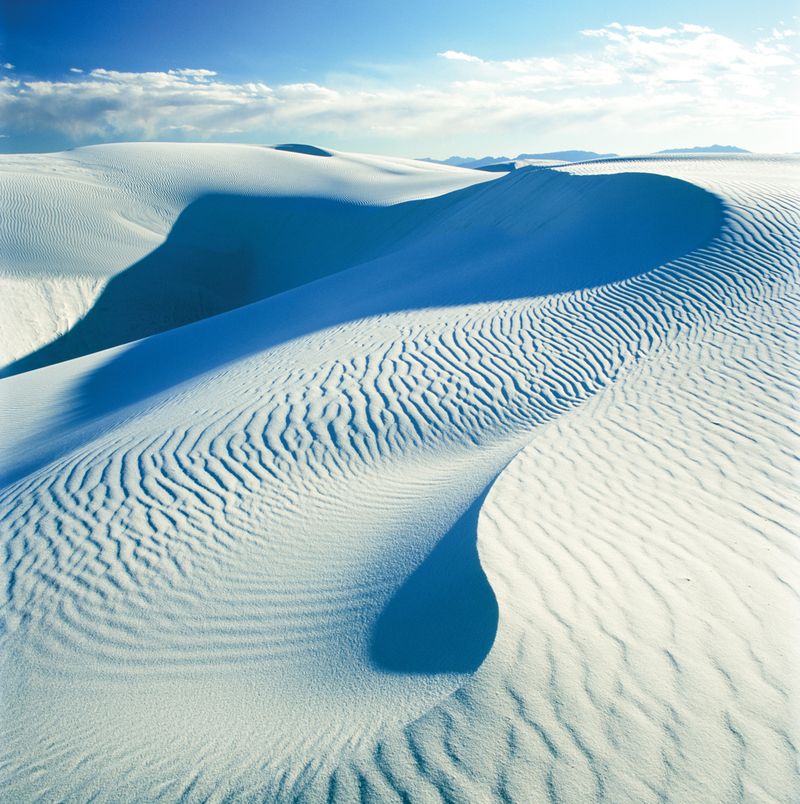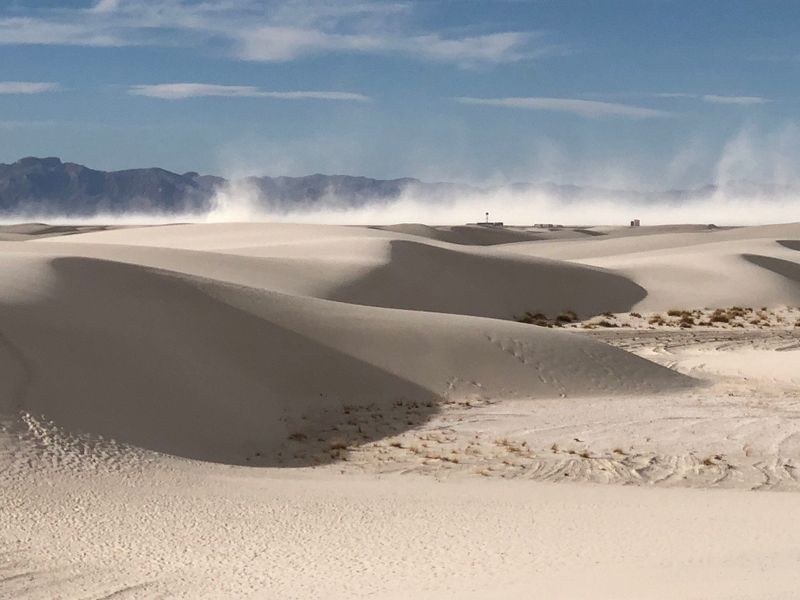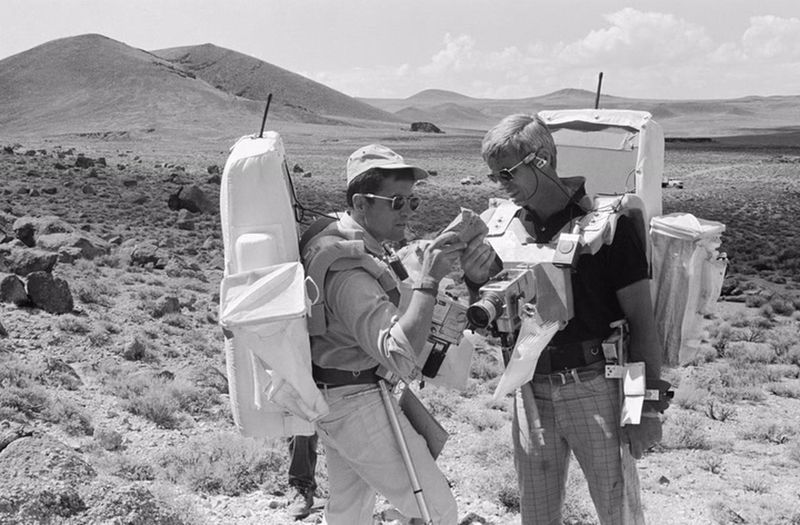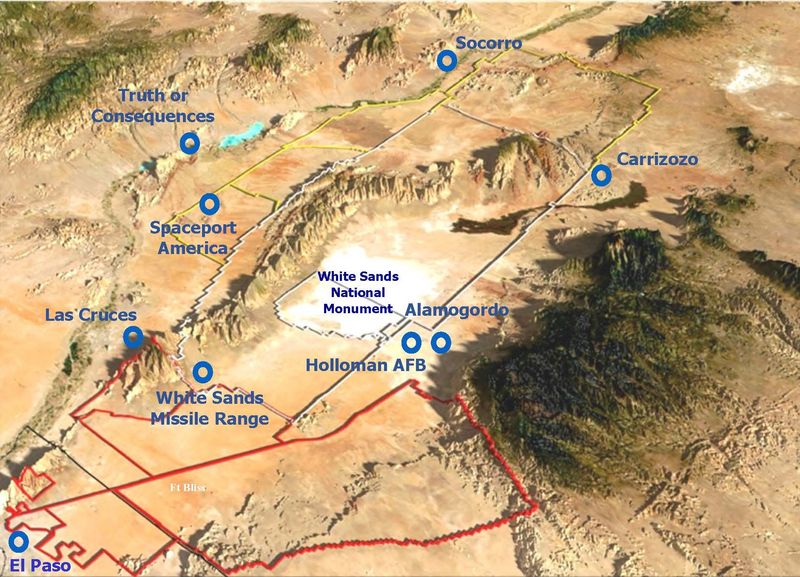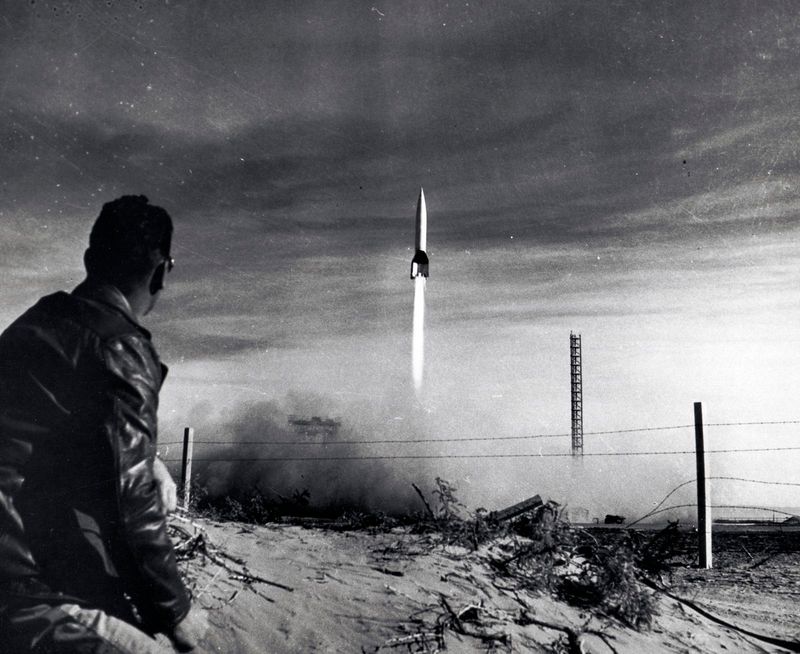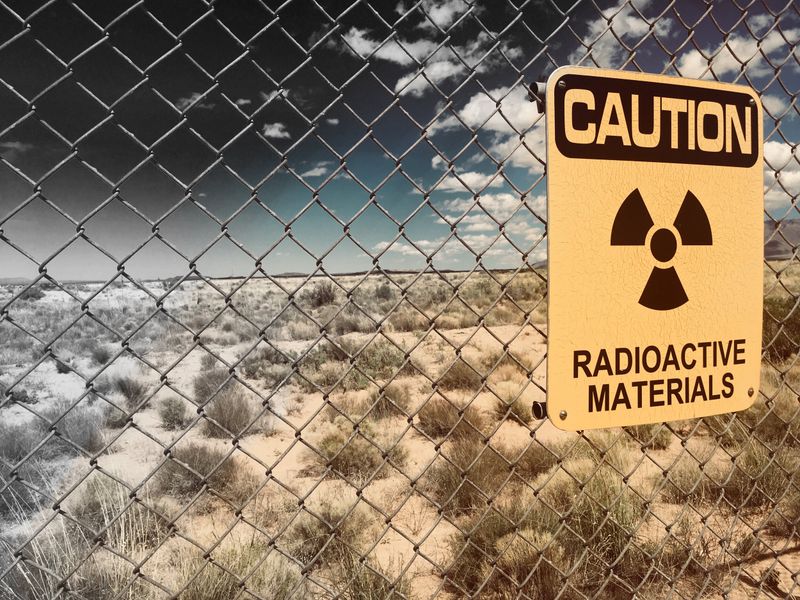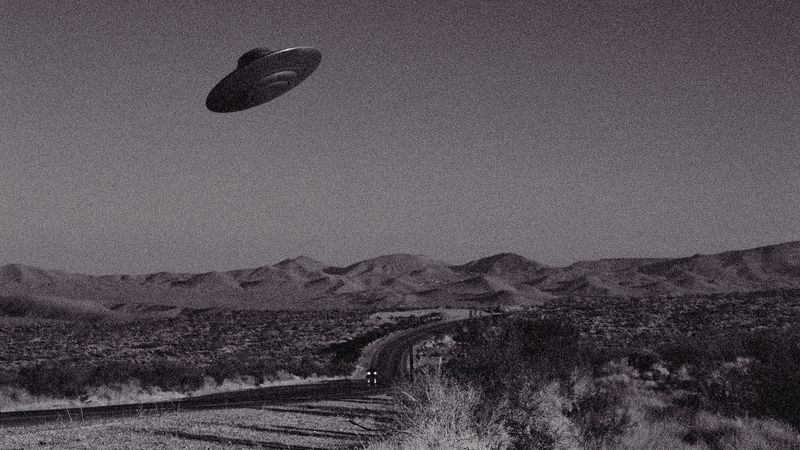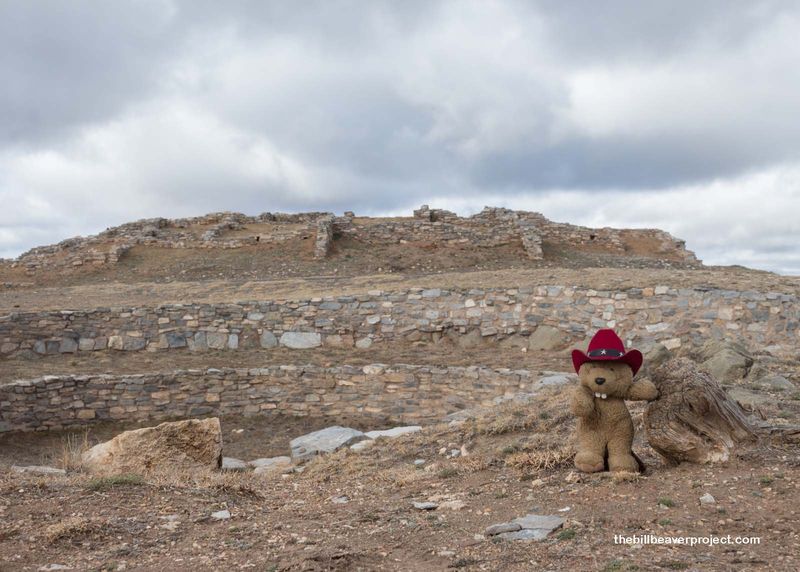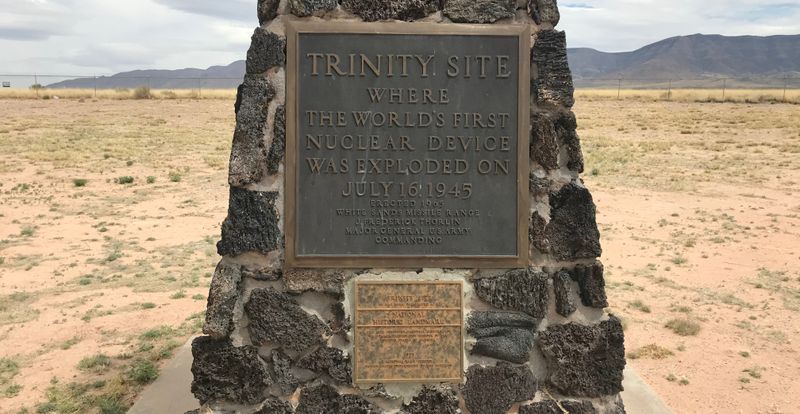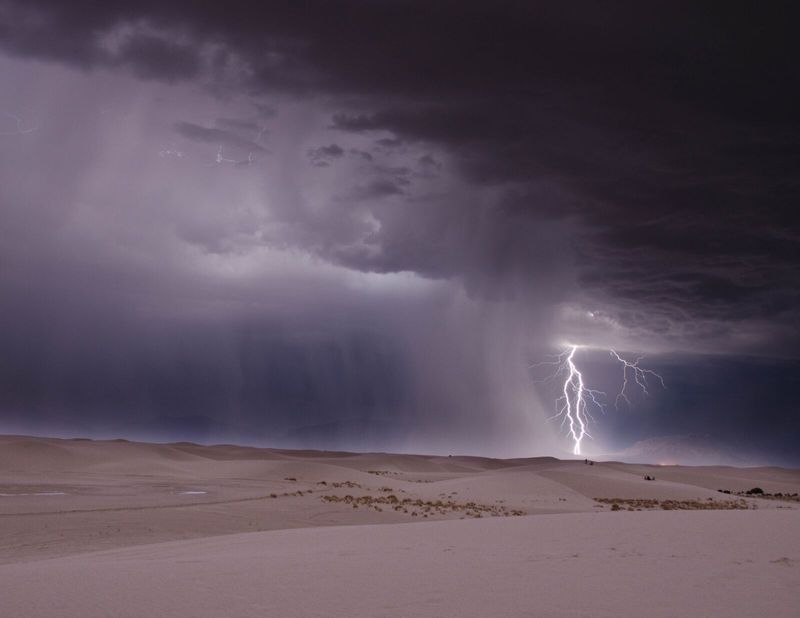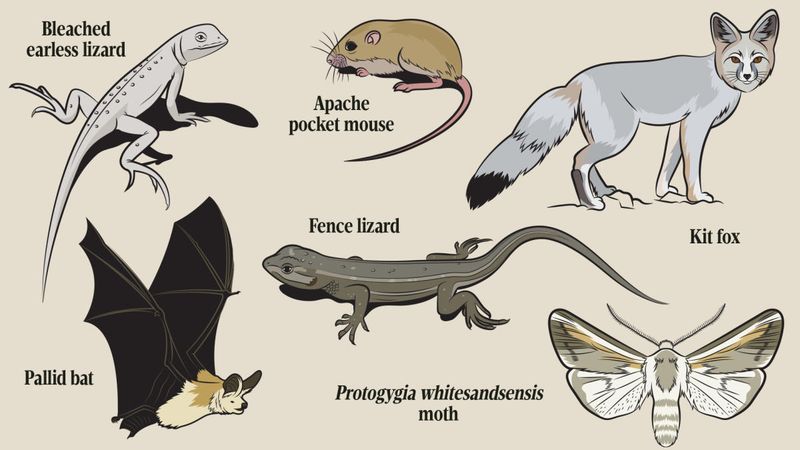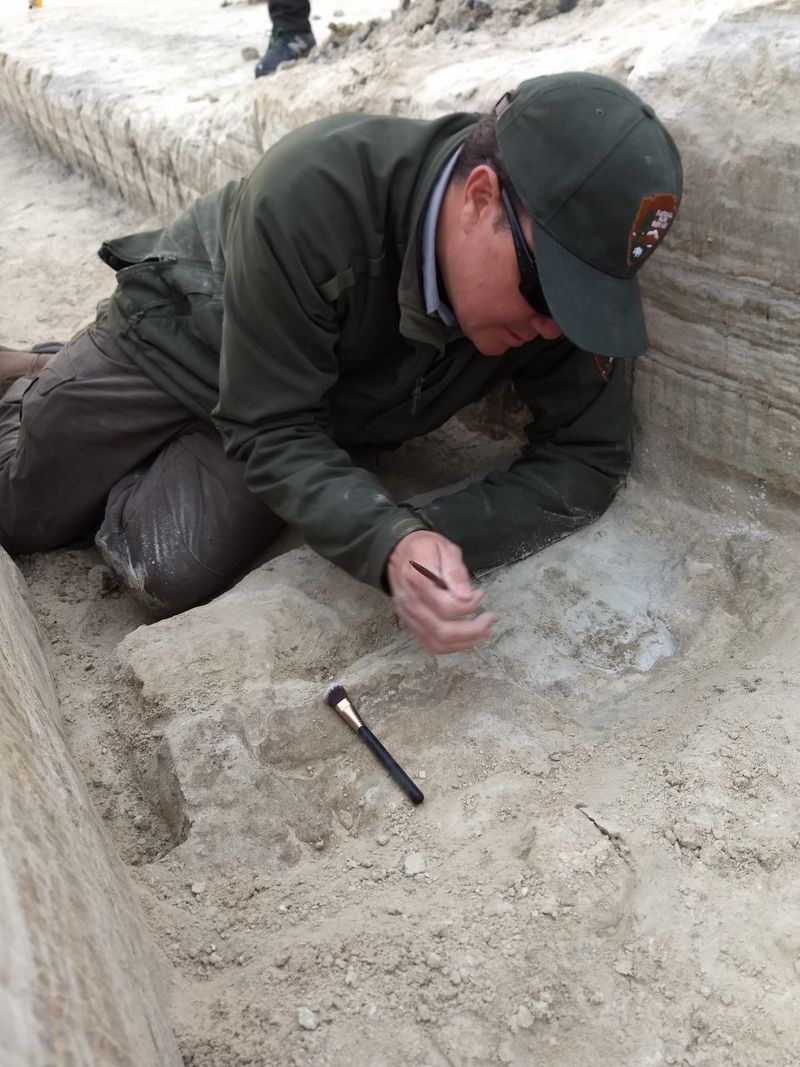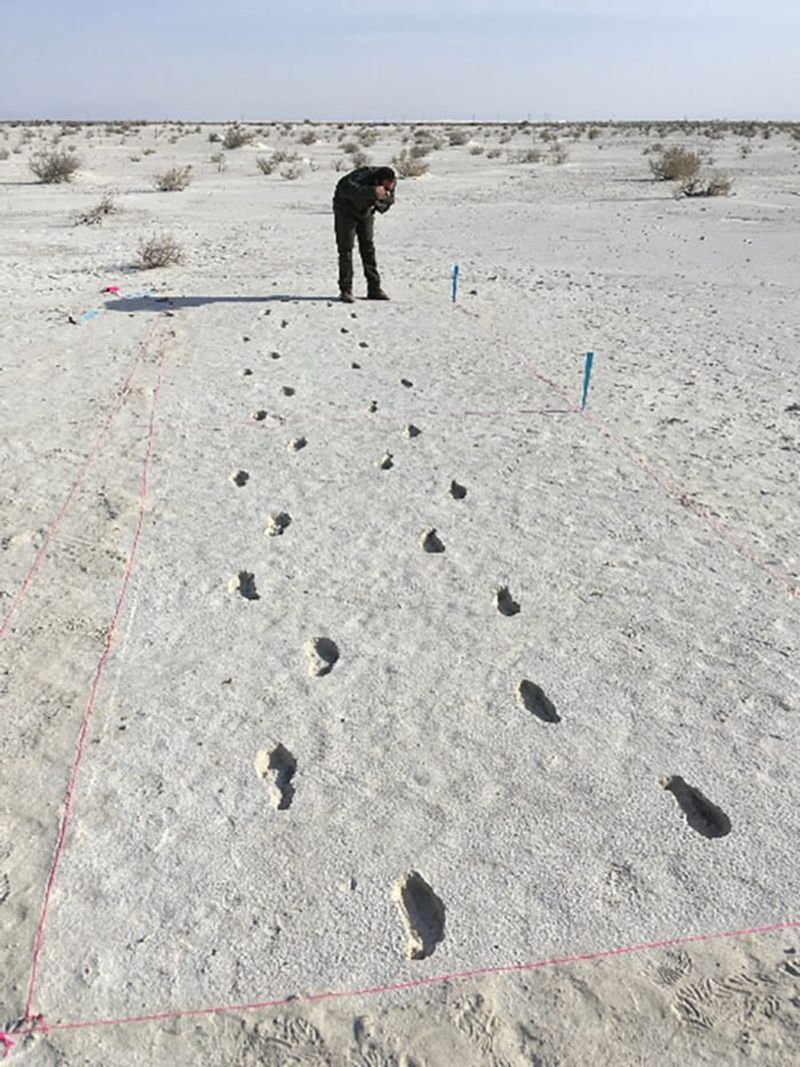White Sands National Park in New Mexico dazzles with its vast expanse of white gypsum dunes, a sight that captivates visitors from around the globe. However, beneath its serene beauty lies a tapestry of intriguing and unsettling truths.
From ancient geological formations to modern-day military operations, White Sands is a place where history and mystery intertwine.
Explore these 20 truths to uncover the hidden layers of this extraordinary landscape, where past and present collide in unexpected ways.
1. White Sands Was Once the Bottom of an Ancient Sea
Over 250 million years ago, the area now known as White Sands was submerged under a shallow sea. This prehistoric body of water left behind gypsum, which over millennia formed the stunning white dunes we see today. Imagine the vast, endless ocean giving way to the stark, arid beauty of the desert. The transformation from sea to sand is a testament to nature’s ever-changing ways, where time turns water-bound landscapes into dry, shimmering expanses. It’s a captivating reminder of Earth’s dynamic history, hidden beneath layers of sand and history.
2. It Was Later Home to Ice Age Lake Otero
Roughly 20,000 years ago, the Tularosa Basin was home to Lake Otero, a massive freshwater lake that supported an astonishing array of life. Picture mammoths and camels roaming its shores, with early humans living alongside them. This ancient lake played a critical role in the ecosystem, providing resources and life to creatures long extinct. As the climate changed, the lake gradually dried, leaving behind salt flats and the white gypsum dunes. The remnants of Lake Otero continue to whisper stories of a time when giants walked the Earth.
3. Fossilized Human Footprints Date Back Over 21,000 Years
In 2021, researchers discovered fossilized human footprints at White Sands, dating back over 21,000 years. These footprints represent some of the oldest evidence of human presence in North America. Imagine the thrill of discovering such ancient traces, remnants of a forgotten age preserved in the desert’s shifting sands. The footprints tell stories of early humans who traversed this landscape, leaving their mark in history. They offer rare insights into life during the Ice Age, a time when humans were beginning to shape their world.
4. Prehistoric Humans Walked Beside Mammoths and Giant Sloths
White Sands is a unique archaeological treasure trove, where tracks of prehistoric humans, mammoths, and giant ground sloths intersect. These ancient pathways offer glimpses into a world where humans and megafauna coexisted. Imagine the awe of witnessing such colossal creatures up close, sharing the landscape with early humans. These tracks provide rare evidence of human-megafauna interactions, illustrating the complex relationships that existed thousands of years ago. It’s a humbling reminder of the past, preserved in the sands of time.
5. The Land Is Sacred to the Mescalero Apache
For centuries, White Sands has held cultural and spiritual significance for the Mescalero Apache. This land is more than just a natural wonder—it is a sacred space intertwined with their heritage and traditions. The Mescalero Apache’s deep connection to White Sands is often overlooked in popular narratives, yet it’s a vital part of the area’s history. Their stories and traditions are woven into the fabric of this landscape, a testament to their enduring legacy. This sacred bond continues to enrich the cultural tapestry of White Sands.
6. The Dunes Are the Largest Gypsum Field in the World
White Sands boasts the largest gypsum dune field on Earth, covering an impressive 275 square miles. This rare geological formation is a marvel of nature, captivating visitors with its vast, undulating landscape. The dazzling white dunes are constantly on the move, driven by the wind, creating an ever-changing scenery. This unique environment supports a variety of specially adapted flora and fauna, thriving in conditions found nowhere else on the planet. It’s a natural wonder that continues to intrigue scientists and visitors alike.
7. The Dunes Are Constantly on the Move
The shimmering dunes of White Sands are in constant motion, migrating up to 30 feet per year due to the relentless winds. This dynamic movement continuously shapes the landscape, swallowing roads, vegetation, and old structures in its path. Imagine the power of nature as it reshapes the environment, crafting new vistas while erasing old footprints. The ceaseless movement of the dunes is a reminder of the ever-changing nature of our world, where nothing remains static for long. It’s a captivating dance of sand and wind.
8. Apollo Astronauts Trained Nearby for the Moon Landing
Before their historic journey to the Moon, Apollo astronauts trained in the White Sands area, drawn by its barren, lunar-like landscape. Here, they honed their geology skills and practiced desert survival, preparing for the challenges of space exploration. This unique training ground provided an invaluable experience, simulating the harsh conditions astronauts would face on the lunar surface. The connection between White Sands and the Apollo missions highlights the area’s significance not only to Earth-bound history but also to humanity’s ventures beyond our planet.
9. White Sands Was Used for WWII Bombing Practice
During World War II, the vast expanses of White Sands served as a practice ground for U.S. military bombing drills. The isolated location was ideal for testing, leaving behind remnants like craters and shell fragments. These relics of history echo the area’s strategic importance during a tumultuous time. The scars left on the landscape offer a stark reminder of its past military use, contrasting sharply with the serene beauty of the dunes. It’s a haunting juxtaposition of peace and conflict, woven into the history of White Sands.
10. Part of the Park Borders an Active Missile Range
Adjacent to White Sands National Park lies the White Sands Missile Range, one of the largest military installations in the United States. This active missile range highlights the juxtaposition of natural beauty and military presence. Occasionally, the park must close to the public for missile tests, reminding visitors of the ongoing military activities nearby. The proximity of these two worlds—peaceful dunes and technological testing ground—underscores the complex history and modern-day realities of White Sands. It’s a landscape where contrasts are ever-present.
11. It Was the Launch Site for Captured German V-2 Rockets
After World War II, White Sands became a pivotal location for missile development, using captured German V-2 rockets and scientists. This era marked the beginning of America’s journey into rocketry and space exploration. The barren landscape was ideal for testing these powerful rockets, propelling the U.S. into a new technological age. The echoes of these early tests still resonate in the sands, a testament to a time when the world was transitioning into the modern space era. It’s a historical landmark in the annals of rocketry.
12. The Trinity Test Happened Just 65 Miles Away
On July 16, 1945, the first atomic bomb was detonated at the Trinity Site, just 65 miles from White Sands. This monumental event marked the dawn of the atomic age, forever altering the course of history. The detonation sent shockwaves across the region, both physically and metaphorically, signaling a new era of military power. Fallout from the test likely drifted over parts of White Sands, intertwining its serene landscape with the shadows of nuclear history. It’s a sobering reminder of humanity’s capacity for both creation and destruction.
13. Radiation Concerns Still Surround the Area
While White Sands National Park itself is safe for visitors, some areas within the nearby missile range still bear contamination from decades of military testing. Concerns about residual radiation persist, adding an unsettling layer to the region’s history. The juxtaposition of a natural wonder next to a site of potential hazard underscores the complex narrative of White Sands. This legacy of military activity serves as a cautionary tale, reminding us of the environmental impact of technological advancements. It’s a delicate balance between natural beauty and man-made challenges.
14. Project Mogul Launched Here—and Sparked the Roswell Incident
In the late 1940s, Project Mogul launched top-secret spy balloons from White Sands, inadvertently sparking the infamous Roswell UFO incident. A crashed balloon was misidentified as an alien spacecraft, fueling decades of conspiracy theories. These high-altitude balloons were part of a covert operation to detect Soviet nuclear tests, blending science fiction with Cold War realities. The deception and intrigue surrounding Project Mogul add a mysterious aura to White Sands, where secrets and stories are hidden beneath the desert sun.
15. Local Families Were Displaced to Make Room for Military Testing
During World War II, the establishment of the White Sands Missile Range led to the displacement of local ranchers and Native families. Many of these families were forced to leave their homes, and some never returned. This upheaval left a lasting impact on the community, with lands remaining off-limits to descendants. The stories of displaced families are an often-overlooked chapter in the history of White Sands, highlighting the human cost of military expansion. It’s a poignant reminder of the sacrifices made for progress.
16. The Park Was Once Considered for Nuclear Testing
During the Cold War, the U.S. government considered White Sands as a potential site for nuclear testing. Although no tests occurred within the park, the mere consideration underscores the tense atmosphere of the era. The possibility of atomic explosions in this serene landscape adds another layer to its complex history. This chapter in White Sands’ story reflects the geopolitical pressures of the time, where natural beauty and nuclear ambition intersected. It’s a chilling reminder of a period when the threat of nuclear conflict loomed large.
17. Gypsum Dust Can Become a Health Hazard During Windstorms
While White Sands’ gypsum dunes are generally safe, windstorms can stir up fine particles, creating health concerns. These airborne particles can irritate the eyes, skin, and lungs, particularly during dry seasons. The swirling dust transforms the dunes’ beauty into a potential hazard, reminding us of nature’s unpredictable power. Visitors must heed weather warnings, as the desert environment can change rapidly. This dynamic interplay between serenity and danger adds an element of unpredictability to White Sands, where safety and natural wonder coexist.
18. The Region Hosts Endemic Species Found Nowhere Else
White Sands is a haven for unique endemic species, such as the bleached earless lizard and White Sands pupfish. These creatures have adapted to the harsh, reflective environment, showcasing nature’s resilience. The lizard’s pale coloration blends seamlessly with the gypsum dunes, while the pupfish thrives in isolated water pockets. Their presence highlights the extraordinary biodiversity of White Sands, where life finds a way to flourish in extremes. These endemic species are a testament to the delicate balance of this ecosystem, thriving against all odds.
19. Hidden Artifacts and Relics Are Buried Beneath the Dunes
Beneath the undulating dunes of White Sands lie hidden relics, from prehistoric tools to remnants of military drills. These buried treasures offer glimpses into the area’s rich history, preserved by time and sand. Archaeologists continue to uncover these artifacts, piecing together stories of past civilizations and more recent historical events. The shifting sands both conceal and reveal these secrets, adding depth to White Sands’ narrative. Each discovery enriches our understanding of the region’s multifaceted past, where history and archaeology intersect in the desert.
20. The Landscape Is Still Changing—and Revealing New Secrets
Wind, erosion, and scientific digs continually reshape White Sands, uncovering new fossils and trackways. These discoveries reveal fresh insights into the region’s history and prehistoric life. As the dunes shift, they unveil secrets buried for millennia, offering a dynamic window into the past. Scientists eagerly study these finds, uncovering stories of ancient ecosystems and the creatures that inhabited them. The ever-changing landscape of White Sands is a living museum, where each gust of wind writes a new chapter in a story still unfolding.
